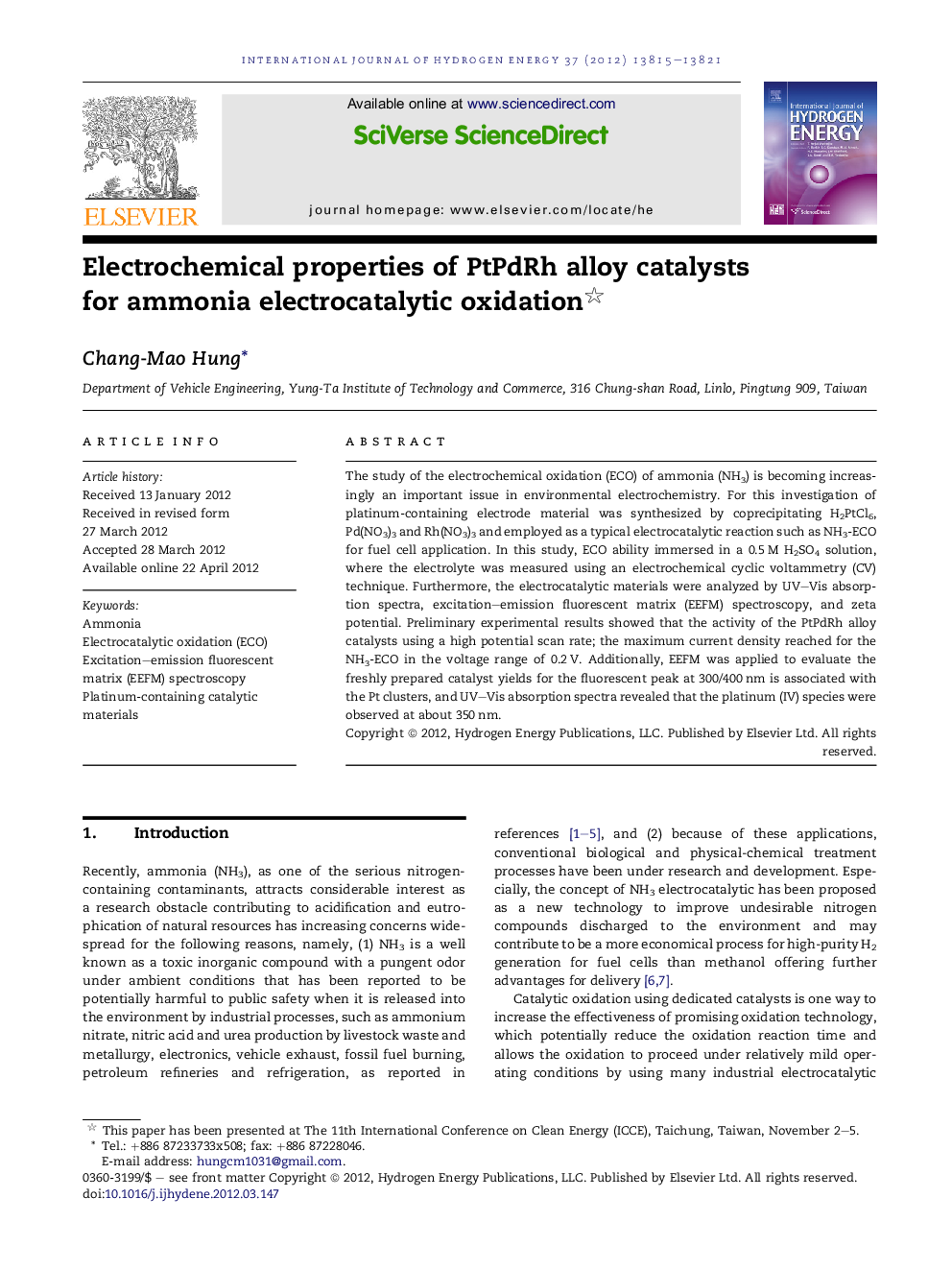| Article ID | Journal | Published Year | Pages | File Type |
|---|---|---|---|---|
| 1282288 | International Journal of Hydrogen Energy | 2012 | 7 Pages |
The study of the electrochemical oxidation (ECO) of ammonia (NH3) is becoming increasingly an important issue in environmental electrochemistry. For this investigation of platinum-containing electrode material was synthesized by coprecipitating H2PtCl6, Pd(NO3)3 and Rh(NO3)3 and employed as a typical electrocatalytic reaction such as NH3-ECO for fuel cell application. In this study, ECO ability immersed in a 0.5 M H2SO4 solution, where the electrolyte was measured using an electrochemical cyclic voltammetry (CV) technique. Furthermore, the electrocatalytic materials were analyzed by UV–Vis absorption spectra, excitation–emission fluorescent matrix (EEFM) spectroscopy, and zeta potential. Preliminary experimental results showed that the activity of the PtPdRh alloy catalysts using a high potential scan rate; the maximum current density reached for the NH3-ECO in the voltage range of 0.2 V. Additionally, EEFM was applied to evaluate the freshly prepared catalyst yields for the fluorescent peak at 300/400 nm is associated with the Pt clusters, and UV–Vis absorption spectra revealed that the platinum (IV) species were observed at about 350 nm.
Graphical abstractThe cyclic voltammetry (CV) display the activity of the PtPdRh alloy catalysts using a high potential scan rate; the maximum current density reached for the NH3 reaction in the voltage range of 0.2 V. Furthermore, this reaction ability may explain the dehydrogenation for the ammonia oxidation because of the electrochemical surface active catalytic sites that were not enough formed.Figure optionsDownload full-size imageDownload as PowerPoint slideHighlights► The electrocatalytic oxidation of ammonia over a PtPdRh electrocatalytic material. ► The electrocatalytic material exhibits significant activity in an acidic environment. ► EEFM was applied to evaluate the material yields for the fluorescent.
